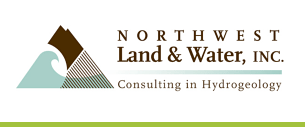NLW works with a variety of water providers — large and small — to develop reliable, sustainable supplies for drinking and other purposes. In addition to exploration, aquifer testing, and yield analysis, we offer expertise in assessing water quality and developing strategies for maintaining water wells.
Projects
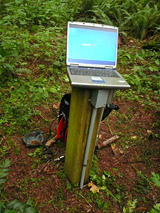 Client: Private landowner
Client: Private landowner
Location: Island County, Washington
As part of a fast-track transaction for a waterfront property on South Camano Island, NLW evaluated the yield from an existing domestic well. We also projected drawdown under water supply scenarios for the existing home and potentially for a second and third home. The property lies along a marine shoreline that had been designated as having a medium-to-high risk for seawater intrusion. Our analysis entailed assessing the potential for seawater intrusion along this shoreline. We conducted a 24-hour pumping test with minimal alterations to the existing well and plumbing configurations and used the test data to project long-term drawdown and the seawater intrusion risk. During the test, we measured chloride and specific conductance and we collected samples to track salinity trends and assess water quality.
The results of our analyses provided a basis for designing a monitoring plan that would identify changes in water level / quality and alert the landowner to the possible onset of seawater intrusion.
Client: City of Lacey
Location: Thurston County, Washington
This project entailed developing a new, high-capacity (1,500 gpm) production well and exploring water resources at four sites in the Hawks Prairie area. The exploration wells penetrated a deep undifferentiated aquifer (the TQu) to depths of 500 to 900 feet.
NLW managed this large and complex project, which had a value of over $1M, for 2.5 years. We evaluated the potential for impacting local streams and ran a GFLOW model to investigate groundwater development scenarios and their potential for causing seawater intrusion. To address these concerns, we developed monitoring plans, collected and managed various types of data, compiled hydraulic and geochemical test data to evaluate well yield and hydraulic continuity, and constructed a conceptual hydrogeologic model.
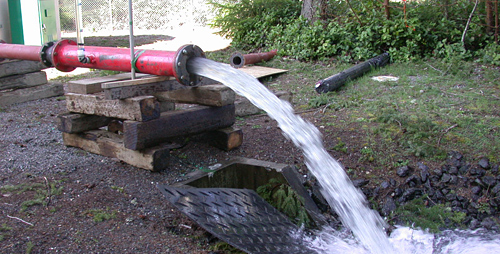
Client: City of Lacey
Location: Thurston County, Washington
NLW worked with the City of Lacey to rehabilitate Beachcrest Wells 1 and 2. This work involved initial testing, followed by downhole mechanical rehabilitation methods (including Hydropuls™) and post-rehab testing. As a result of our work, the interior surfaces of the wells were cleaned and the total yield from the site was increased.
In addition, NLW assisted the City of Lacey with rehabilitation efforts for its Production Well 7. To identify the source of a possible bacteria problem, this project has involved characterizing water quality, both at the wellhead and at points along the City’s treatment and distribution system. The investigation has focused on several tasks:
- Identifying the types and concentrations of bacteria present at various locations
- Characterizing the chemical conditions that these organisms favor
- Designing and implementing strategies — both long-term and short-term — for correcting biofouling problems
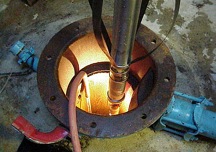 Client: City of Lacey
Client: City of Lacey
Location: Thurston County, Washington
As part of a City of Lacey effort to fully use its permitted water rights, NLW evaluated the performance and sustainable yield for Wells 4 and 7. We also tested an old City irrigation well to quantify its yield. The work included step-rate testing and water-quality sampling. Results were used to compare sustainable yields to instantaneous water rights and to recommend operational pumping rates.
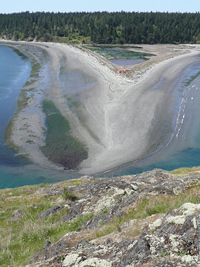 Client: Various private landowners
Client: Various private landowners
Location: Island County, Washington
Jim Mathieu was instrumental in developing groundwater supplies on Frost, Henry, Johns, and part of Orcas Islands, where saltwater intrusion constrained development. He developed field reconnaissance maps, reviewed the hydrogeologic literature, and then conducted well and aquifer tests near shorelines. Jim also monitored water quality and collected the hydraulic data required to estimate sustainable yield. Based on these investigations and testing, he applied analytical models to estimate the potential for seawater intrusion. The project deliverables included recommendations for monitoring pumping, aquifer levels, and water quality parameters.
Client:
City of Auburn
Location: King & Pierce Counties, Washington
Over the past two decades, Jim and Laura have worked with the City of Auburn on a variety of projects that have focused on characterizing the local and regional hydrogeology, developing additional water supplies, and obtaining water rights. This work has included monitoring groundwater quality, designing and conducting aquifer tests, analyzing hydraulic data, developing well specifications, logging boreholes, and supervising well construction. Jim has also managed well maintenance and rehabilitation work.
Most significantly, Jim developed a sophisticated numerical model of the groundwater flow system using MODFLOW. A state-of-the-art tool for assessing groundwater–surface water interactions, this model evaluates the effects of groundwater withdrawals on river flows and it defines recharge zones for wells and springs. The model incorporates monitoring and other data from river stations and wells. It can be operated using Groundwater Vistas, a processing application that features a graphical user interface.
Client: City of Olympia
Location: Thurston County, Washington
The City of Olympia needed to evaluate the feasibility of withdrawing 12.5 MGD from the McAllister Springs area to meet its future water demands. Jim Mathieu managed field explorations for this project, drilling and testing wells to provide the data required to:
- Analyze the potential yield of the site
- Locate and design multiple supply wells
- Assess the local groundwater quality
